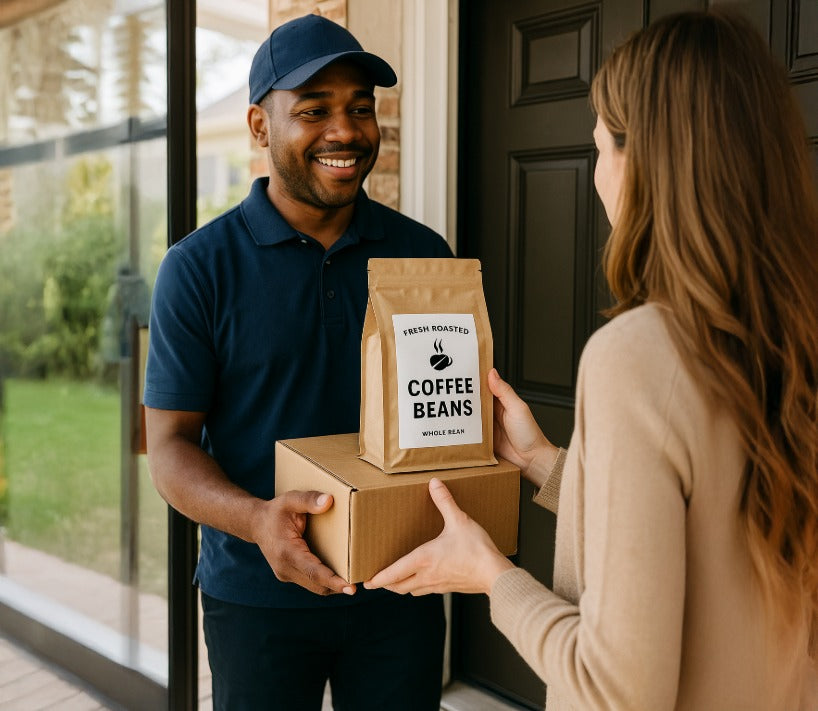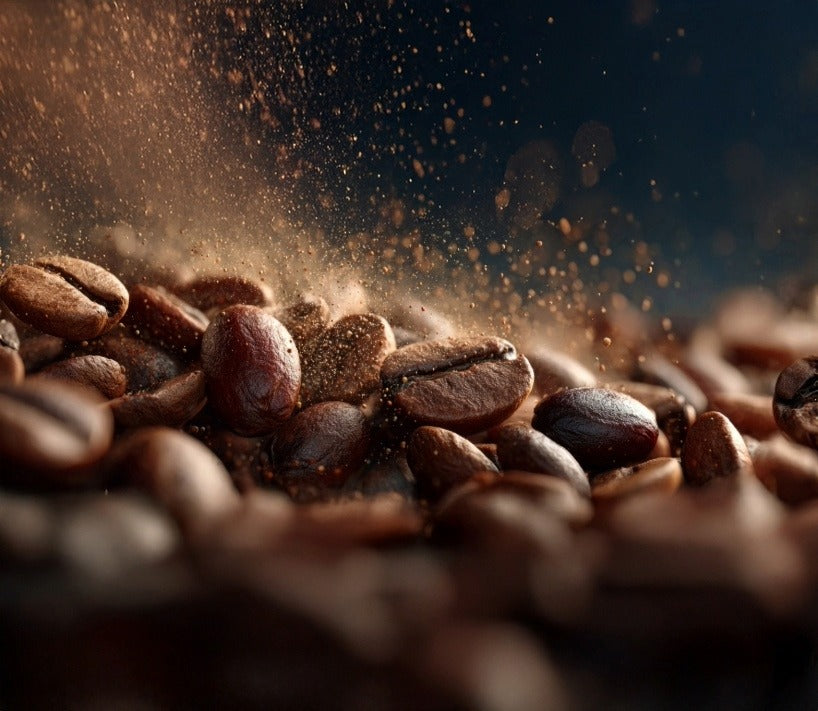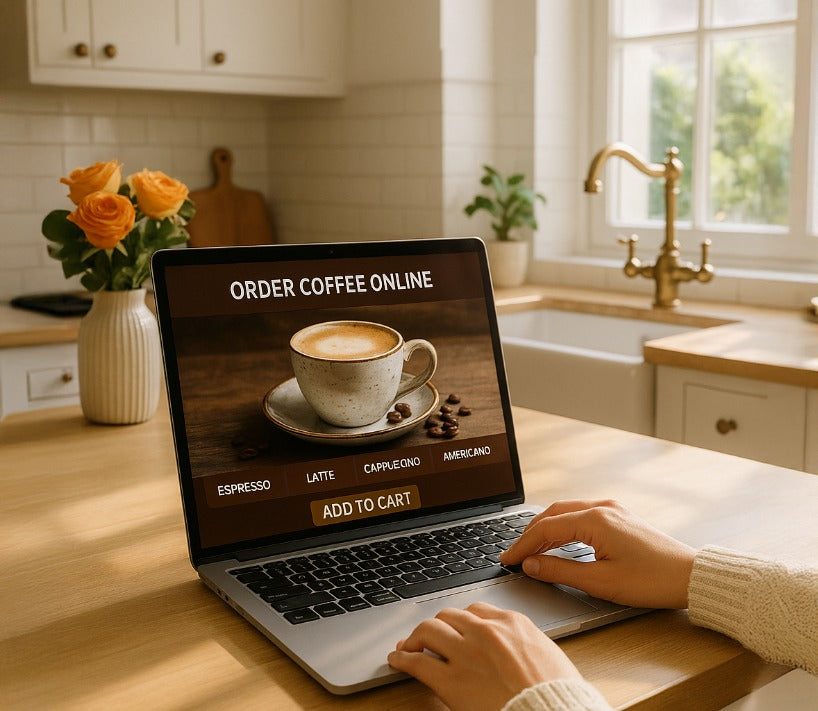Best Craft Coffee at Home: Stop Eyeballing Your Grounds and Start Brewing Like a Pro
June 17, 2025 3 min read
Best Craft Coffee at Home: Stop Eyeballing Your Grounds and Start Brewing Like a Pro
“Wait, Did I Just ‘Season to Taste’ My Coffee?” ☕️🤔
Have you ever watched a celebrity chef go rogue with salt—sprinkle, taste, sprinkle, taste—then tried the same freestyle magic with coffee grounds? Newsflash: your daily mug isn’t a stew pot. When you eyeball those precious beans, you’re basically playing caffeine roulette. One morning it’s rocket fuel, the next it tastes like murky bathwater. If your goal is the best craft coffee at home (see what I did there?) you need a trusty scale—period.
Why Measuring Matters (and the Science Behind Your Sad Mug)
1. Extraction: The Invisible Puppet Master
Water needs enough coffee solubles to dance with—but not too many. A standard 1:16 coffee-to-water ratio (e.g., 20 g coffee to 320 g water) consistently lands in the Specialty Coffee Association’s “Gold Cup” range. Miss by a few grams and you swing from sour under-extracted (too little coffee) to bitter over-extracted (too much coffee). Guessing ruins repeatability, turning your best craft coffee at home routine into Groundhog Day with worse hair.
2. Bean Density & Roast Level ≠ Volume
Light roasts are denser than dark roasts, so a tablespoon of each doesn’t weigh the same. That’s why “2 scoops” is vaguer than a politician’s promise. Weighing neutralizes density drama, keeping your cup consistent whether you buy the freshest craft coffee online or snag beans from the grocery aisle.
3. Consistency Breeds Mastery
Ever tried dialing in a grinder while your dose swings wildly? You’ll chase flavor notes endlessly. Once weight is locked, grind size, water temp, and brew time are suddenly real variables you can tweak—like a coffee scientist with an apron instead of a lab coat.
4. Saves Money (and Heartache)
Using 5 g extra per cup might feel harmless, but that’s ~75 g a week if you brew twice daily. That’s a whole latte beans! Measuring stretches your budget—and lets you splurge on the top specialty coffee online instead of buying more of the same old stuff.
Fresh On-Page Element – The “Eyeball vs. Scale” Showdown
| Brewing Method | Eyeballing Grounds | Using a Scale |
|---|---|---|
| Taste Consistency | 🎯 “Surprise Me” Mode – unpredictable | 🎯 Repeatable flavor each brew |
| Cost Efficiency | ☠️ Wastes beans (over-dosing) | 💰 Beans last as intended |
| Troubleshooting | 🤷 “Was it grind? Dose? Moon phase?” | 🔍 Clear variables to adjust |
| Convenience | ⏱️ Fast but sloppy | ⏱️ Just as quick with practice |
| Best Craft Coffee at Home Potential | 🪀 Yo-yo quality | 🏆 Gold Cup worthy |
How to Level-Up Your Scale Game in 5 Easy Steps
-
Pick Your Scale
-
Any digital kitchen scale that reads to 0.1 g works. Bonus points for waterproof buttons—spills happen.
-
-
Know Your Ratio
-
Classic pour-over sweet spot: 1 g coffee to 15–17 g water. Start 1:16 for balanced flavor nirvana.
-
-
Tare Like You Care
-
Zero the scale with your brewer or mug on top before adding grounds or water.
-
-
Dose, Grind, Brew
-
Add exact grams of coffee, grind, then brew while weighing water (or use a separate kettle scale).
-
-
Taste, Tweak, Repeat
-
If it’s too bright, bump ratio to 1:15. If too heavy, swing to 1:17. Welcome to the matrix.
-
Bonus Section – “But I Don’t Own a Scale!” FAQ
Quick FAQ
Q1: Isn’t eyeballing close enough?
A: Close only counts in horseshoes and hand grenades—coffee is neither. Even a 2 g swing can sabotage flavor.
Q2: What scale specs should I look for?
A: Resolution to 0.1 g, capacity at least 2 kg, and an auto-off timer longer than three minutes so it doesn’t power down mid-pour.
Q3: Do different brew methods need different ratios?
A: Yes. French press likes 1:14–1:15, AeroPress is a playground (1:12 to 1:20), espresso sits around 1:2. Ratios are your flavor steering wheel.
Q4: Can pre-ground coffee still benefit?
A: Sure. Dose accuracy still matters, though you’ll sacrifice peak freshness quickly. That’s why the best coffee subscription online delivers whole bean.
Final Sip – Your Path to Brew Brilliance
Look, I’m not saying a scale will turn your kitchen into a third-wave café overnight, but it is the cheapest upgrade you’ll ever make. You wouldn’t season soup blindfolded, so stop freelancing your grounds. Embrace the gram, perfect your ratio, and watch your morning ritual ascend from “meh” to best craft coffee at home brilliance. Then maybe—just maybe—your mug will finally live up to those brag-worthy beans from the best coffee to buy online.
Now grab that scale, channel your inner barista, and brew on. Your taste buds (and wallet) will thank you.
Also in Best Coffee To Buy Online Education

Best Fresh Roasted Coffee Delivery Online
November 28, 2025 4 min read
I roast the best tasting coffee at home for you! I use 100% electric equipment, so no hydrocarbons here. Best fresh roasted coffee delivery starts with high-scoring specialty coffee online.

Which Roaster Makes Better Coffee: Gas or Electric?
November 27, 2025 4 min read
Why electric drum roasters produce cleaner, sweeter, more consistent coffee—especially the kind you want when buying fresh roasted coffee beans online or trying to make the best tasting craft coffee at home.

Biggest Coffee Buying Mistake at Home
November 26, 2025 4 min read
Learn why the roast date matters and how to buy fresh, high-quality specialty coffee online. No guesswork when you order coffee online with me. I only stock, roast, and process the best tasting craft coffee at home. I am YOUR personal roaster.
